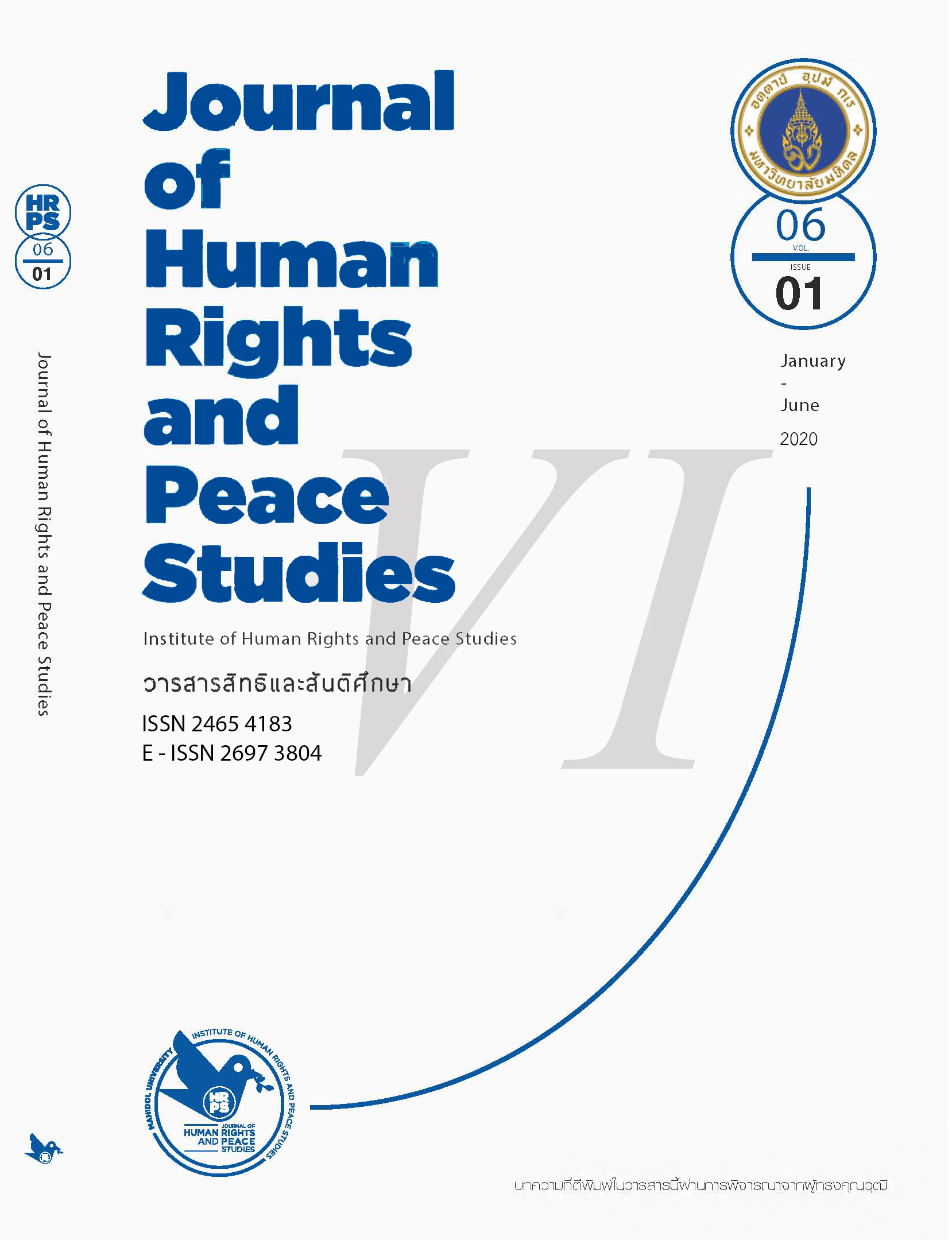Ramifications and Solutions for Existing Child Marriage Law in Bangladesh
Main Article Content
Abstract
Bangladesh has recently reformed the law related to child marriage from the previous Child Marriage Restraint Act (1929) to the new Child Marriage Restraint Act (2017). Even though the 1929 provision for the legal age of marriage at 18 years for females and 21 years for males has been retained, a new provision has been inserted in the new Act permitting child marriage beneath the legal age of marriage under special circumstances with the consent of parents and with the permission of court. In contrast to the 1929 law which criminalized marriage of minors, the reformed law allows a child to be married off by their parents or guardians with the permission of the court at any age without safeguards or special circumstances ensuring the protection of the child. The new existing law is clearly a step backwards from the old law. The government of Bangladesh has argued that it had no alternative but to keep the special provision considering the socio-economic reality, especially in rural areas, where children are married at a young age. However, such an argument has no specific illustration in the Act as to when it can be justified. This paper will argue that the deviation in the new law has legal ramifications in the light of the Bangladesh Constitution, some relevant national laws, and international human rights standards. In particular the new law is in conflict with many human rights standards found in other laws. Additionally, the paper provides solutions for mitigating such adverse consequences.
Article Details

This work is licensed under a Creative Commons Attribution-NonCommercial-NoDerivatives 4.0 International License.
The views, opinions, and pictures expressed in this journal are those of the authors and do not necessarily reflect the opinions and viewpoints of the editor and the editorial board. All rights are reserved by the authors and the Institute of Human Rights and Peace Studies of Mahidol University. No part of this journal may be reproduced, stored in a retrieval system, or transmitted in any form or by any means without the prior permission in writing from the journal’s editor, or as expressly permitted by law, or under terms agreed with the appropriate reprographics rights organization. Non-commercial use of information in this journal must be properly referenced.
References
Convention on Elimination of All Forms of Discrimination against Women. (1994). General Recommendation No. 21: Equality in marriage and family relations. Committee on the Elimination of Discrimination Against Women.
Convention on Rights on Child. (2002). Concluding observations of the Committee on the Rights of the Child: Mozambique. Committee on the Rights of the Child.CRC/C/15/Add.172
Covenant on Civil and Political Rights. (1998). Concluding Observations of the Human Rights Committee; Zimbabwe. Human Rights Committee CCPR/C/79/Add. 89.
Gebregziabher, S. (2016, November 17). How we stopped 2000 child marriages in Bangladesh. www.planinternational.org/bangladesh/blog
Girls Not Brides. (2019). Bangladesh: Child marriage rates. Retrieved November 29, 2019, from www.girlsnotbrides.org/childmarriage/Bangladesh
Gouha, S. (2017, March 4). The dangers of new child marriage law in Bangladesh. Al Jazeerahttps://www.aljazeera.com/indepth/opinion/2017/03/risks-child-marriage-law-bangladesh-170304092243563.html
Griffin, J. (2019, April 29). Girls in Bangladesh learn to talk their way out of forced marriage. TheGuardian. https://www.theguardian.com/global-development/2019/apr/29/girls-in-bangladesh-learn-to-talk-their-way-out-of -forced-marriage
Hoque, S. (2019, December 8). The wonder girl who escaped early marriage to become a gold medallist. Dhaka Tribune, Sports Section.
Human Rights Watch. (2015, June 9). Marry Before Your House is Swept Away: Child Marriage in Bangladesh. Human Rights Watch. https://www.hrw.org/report/2015/06/09/marry-your-house-swept-away/child-marriage-bangladesh
Human Rights Watch. (2017, March 2). Bangladesh: Legalizing child marriage threatens girls safety. Human Rights Watch. https://www.hrw.org/news/2017/03/02/bangladesh-legalizing-child-marriage-threatens-girls-safety#:~:text=On%20February%2027%2C%202017%2C%20the,their%20parents%20and%20a%20court.
Johnston, H. B., & Naved, R. T. (2008). Spousal violence in Bangladesh: A call for a public-health response.Journal of health, population, and nutrition,26(3), 366–377.
Macrotrends. (2020). Bangladesh Infant Mortality Rate 1950-2019. www.macrotrends.net/countries/BGD/bangladesh/infant-mortality-rate
Nehru, J. (2004). An autobiograpghy.Penguin Books India.
Nour, N. M. (2009). Child marriage: A silent health and human rights issue.Reviews in obstetrics & gynecology,2(1), 51–56.
Onduru, E. (2019, March 6). The dowry system and child marriage. Action Aid. https://actionaid.ie/dowry-system-child-marriage/
Redfern, C. (2019, November 8). Bangladesh’s child marriage problem is the world’s human trafficking crisis. Foreign Policy. https://foreignpolicy.com/2019/11/08/bangladesh-child-marriage-human-trafficking-crisis/
Sattar, M. & Barry, E. (2017, February 27). Bangladesh weakens longstanding law against underage marriage. The New York Times. https://www.nytimes.com/2017/02/27/world/asia/bangladesh-underage-marriage-law.html#:~:text=DHAKA%2C%20Bangladesh%20%E2%80%94%20Bangladesh's%20Parliament%20softened,and%20maternal%20and%20infant%20mortality.
U.S. Department of State. (2019). 2019 Trafficking in Persons Report. Office of the Under Secretary for Global Affairs
United Nations Children's Fund & United Nations Population Fund. (2017). Global Programme to Accelerate Action to End Child Marriage. Retrieved December 9, 2019, from https://www.unicef.org/protection/unfpa-unicef-global-programme-end-child-marriage
United Nations Children's Fund. (2007). Child marriage and the law: Legislative reform initiative paper series. https://www.unicef.org/french/files/Child_Marriage_and_the_Law.pdf
United Nations Children's Fund. (2013). Child Marriage Restraint Act 2017.https://www.unicef.org/bangladesh/sites/unicef.org.bangladesh/files/2018-10/Child%20Marriage%20Restraint%20Act%202017%20English.pdf


